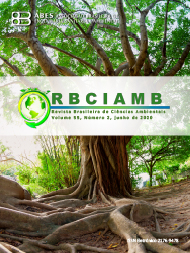ASSOCIATED FACTORS WITH ANTS OCCURRENCES IN URBAN SCHOOLS
DOI:
https://doi.org/10.5327/Z2176-947820200659Keywords:
School environment; Ants assemblage; Infestation; Pest control.Abstract
Schools consist of environments that offer favorable conditions for nesting by ants. This study aims to identify the factors associated with the occurrence of ants in four environments at schools located in urban areas. Sampling was conducted in kitchens, warehouses, dining rooms, and outdoor areas in twelve schools in four cites in the western region of the State of Santa Catarina, Brazil. For sampling, baits and manual collection were used. The environmental variables were obtained in each environment. Similarity between schools regarding ant composition and abundance was assessed by a Non-metric Multidimensional Scaling. We sampled 1,478 specimens of ants and identified 45 species. Similarities (60%) were observed in the abundance and composition of ant assemblages among schools in small towns (Caxambu do Sul, Guatambu, and Palmitos).The presence of outdoor areas with vegetation and green areas in the surroundings, size of constructed area, and frequency of insect control event contribute to the abundance of these insects in the schools environments. Ants are not recognized as potential vectors of pathogenic microorganisms in schools and are neglected if considered the periodicity of insect control.Downloads
Download data is not yet available.
Downloads
Published
2020-06-18
How to Cite
Lutinski, J. A., Guarda, C., & Busato, M. A. (2020). ASSOCIATED FACTORS WITH ANTS OCCURRENCES IN URBAN SCHOOLS. Revista Brasileira De Ciências Ambientais, 55(2), 192–205. https://doi.org/10.5327/Z2176-947820200659
Issue
Section
Articles
License
Copyright (c) 2020 Revista Brasileira de Ciências Ambientais

This work is licensed under a Creative Commons Attribution 4.0 International License.

























